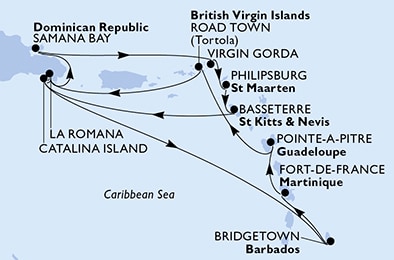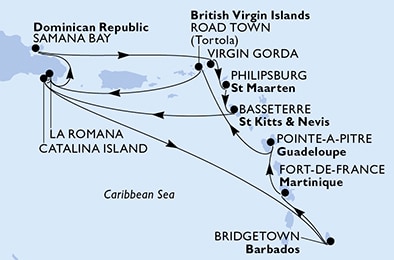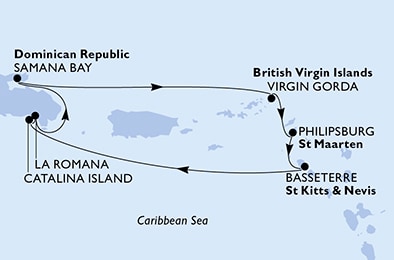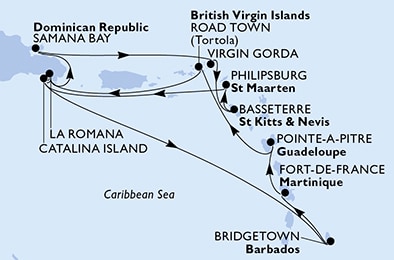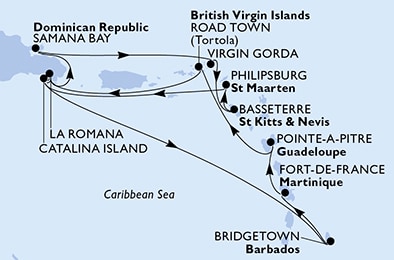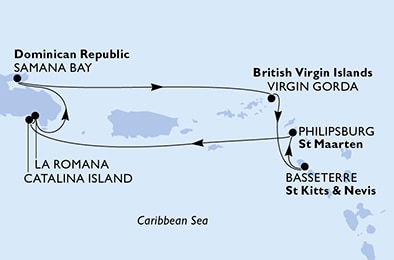
Port Samana Bay
The scenic Samana Bay in the Dominican Republic is a prominent location for cruise ship activities. Its significance lies in its stunning beauty, rich biodiversity, and historical relevance. The bay is known for its humpback whale watching opportunities, which attract a large number of cruise ships and tourists annually.
Cruise ship activities in Samana Bay are diverse and appealing. They include whale watching tours, exploring the mangrove swamps, beach visits, and historical tours. The bay's warm, clear waters also make it ideal for snorkeling and scuba diving. The cruise ship industry plays a significant role in driving the local economy and tourism in the Dominican Republic.
History
The Samana Bay is a significant historical port located in the northeastern part of the Dominican Republic. It was discovered by Christopher Columbus during his first voyage to the New World in 1492. The bay was originally named "Golfo de las Flechas" (Gulf of Arrows) by Columbus, due to confrontations with the native Taíno people.
In the 18th and 19th centuries, the Samana Bay was a major hub for whaling and fishing. It was also a significant stopover for ships involved in the Atlantic slave trade. In the mid-19th century, it gained prominence when the Dominican government invited African-Americans to settle in the area, which led to a unique cultural blend in the region.

